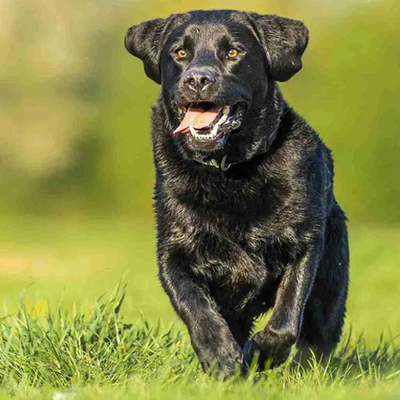Winter Woof-Proof: Essential Cold-Weather Tips for Your Pup
When winter’s icy grasp sets in, our canine companions feel it too. The shorter days, chilly air, slick pavements and snowy trails are not only an invitation to bundle up—but a prompt for us to think proactively about protecting our dogs. At LibertyPaw, we believe every pup deserves a safe, comfortable winter. Whether you’re heading out for a snow-walk or simply brushing away frosty paws indoors, this guide will help you keep your four-legged friend warm, healthy, and thriving this season.
Why Winter Poses Risks for Dogs
Cold weather affects dogs much like it does humans. Dogs lose body heat, their extremities become vulnerable, and moisture from wet fur, snow, or icy paw pads accelerates heat loss. Even dogs who enjoy romping in the snow are not invincible—short coats, low body fat, small size, age, or pre-existing health issues can dramatically increase risk.
Wind-chill, dampness, and slush underfoot make cold stress worse. The key takeaway: winter isn’t just “fun and snow” for your pup—it can become a health hazard without smart precautions.
Top 10 Dog Breeds Especially Sensitive to Cold
While huskies and malamutes are built for blizzards, many popular U.S. breeds are not naturally equipped for harsh winter weather. These short-coated, lean, or tiny dogs are more prone to shivering, discomfort, and frostbite.
1. Whippet
Built for speed, not snow. Whippets have minimal body fat and very short coats, so they chill quickly, even on mild winter days.
2. Italian Greyhound

With thin skin and tiny frames, Italian Greyhounds lose heat rapidly. Even short outings in cool temperatures call for a warm layer.
3. Chihuahua

Small size and short fur mean major heat loss. Chihuahuas should have limited outdoor time in freezing or windy conditions.
4. Greyhound

Elegant and athletic, but their thin coat and low body fat offer little insulation. They prefer moderate climates and brief winter outings.
5. Short-Haired Dachshund

Their low bodies stay close to icy ground, and short coats don’t block wind-chill. They need protection and short walks in the cold.
6. Boxer
Boxers lack an insulating undercoat. Prolonged cold exposure can stress their joints and immune system.
7. Vizsla
Lean, short-coated, and active, Vizslas can get cold quickly in harsh winters and benefit from limited exposure and added support.
8. Toy Breeds (Maltese, Yorkshire Terrier, small mixed breeds, etc.)
Toy breeds have tiny bodies, fine fur, and a high surface-area-to-mass ratio, so they lose heat fast and need extra protection.
Remember: Breed is just one factor. Age, weight, health status, and your dog’s individual to
❄️ Signs Your Dog Is Suffering from Cold Exposure
Dogs can’t tell you when they’re freezing—but their bodies show it clearly if you know what to watch for. Two major cold-related conditions to recognize are hypothermia and frostbite.
🧊 Hypothermia (Whole-Body Cooling)
When a dog’s core body temperature drops below normal (about 101–102.5°F), hypothermia begins.
Watch for:
- Shivering or trembling that won’t stop
- Sluggish movement or seeming “drunk” when walking
- Pale gums or cold extremities (ears, paws)
- Weak pulse or shallow breathing
- Lethargy, collapse, or loss of consciousness in severe cases
What to do:
Bring your dog inside immediately, dry them off, wrap in a warm towel or blanket, and call your vet. Warming should be gradual, not rapid.
🩶 Frostbite (Localized Tissue Damage)
Frostbite occurs when skin and tissues freeze, usually in the extremities—paws, ears, or tail tips.
Signs include:
- Skin turning pale, bluish, or gray
- Cold, stiff areas that may swell
- Pain, whining, or chewing at the affected area
- Blisters or blackened tissue in later stages
Treatment:
- Move your dog into a warm room
- Gently warm affected areas using lukewarm water (not hot)
- Do not rub or massage
- See a vet right away—frostbite can lead to tissue death or infection
🐾 Winter Survival Tips for Every Dog

1. Shorter, Smarter Walks
Take several brief walks rather than one long one in cold weather. Pay attention to paw lifting, shivering, or your dog trying to turn back—they’re signals they’ve had enough.
2. Protect Those Paws
Snow, ice, and road salt can crack paw pads. Apply a paw balm or wax before walks and wipe paws afterward.
3. Dry Off Thoroughly
After snow play or wet weather, towel-dry your dog immediately—especially under the belly and between toes.
4. Warm Indoor Spaces
Create a cozy sleeping area away from drafts and cold floors. If your dog sleeps in a crate, line it with warm bedding or a fleece blanket.
5. Watch Water Bowls
Water can freeze quickly outdoors. Hydration helps dogs regulate body temperature, so make sure they always have unfrozen water available.
6. Nutrition Matters
Cold weather means your dog may burn more calories staying warm. Support their immune system, joints, and coat health with a complete multivitamin supplement such as LibertyPaw Canine Multi Soft Chews. These tasty chews fill nutritional gaps that can weaken your dog’s natural resilience against temperature stress and seasonal immune dips.

7. Mind the Elderly & Puppies
Young, old, or underweight dogs are less able to regulate heat. Keep their outings minimal, supervise closely, and provide warm bedding.
8. Avoid Over-Bathing
Frequent winter baths strip essential oils, leading to dry skin. Use moisturizing dog shampoo and limit baths to when necessary.
9. Stay Visible
Dark winter mornings and evenings increase accident risk. Use reflective collars, leashes, or clip-on lights during walks.
10. Know When It’s Too Cold
If you’re bundled up and still shivering, your dog probably is too. On icy or windy days, opt for indoor enrichment—tug games, puzzle feeders, or trick training—to keep them active and happy.
🌟 The LibertyPaw Winter Wellness Routine
A holistic winter routine keeps your pup strong inside and out. Along with warmth, nutrition plays a pivotal role in maintaining energy, skin integrity, and immune balance through cold months.
Our LibertyPaw Canine Multi Soft Chews offer essential vitamins, minerals, and antioxidants that help fill nutritional gaps during seasonal changes. These chews support coat health, joint mobility, and immune defense—key areas that can be stressed by winter chill.
Why pet parents love it:
- Supports immunity, joint health, and energy levels
- Helps maintain a healthy coat even in dry winter air
- Delicious chicken-flavored soft chews dogs adore
A few chews a day can help your pup face frosty mornings with wagging confidence.
❤️ Wrapping Up
Winter is beautiful—but it’s also demanding. By understanding your dog’s sensitivity, watching for frostbite and hypothermia, and supporting their health inside and out, you can ensure every snowy adventure ends with a warm cuddle, not a trip to the vet.
This season, pair your love and care with proactive nutrition. Your dog will thank you—with tail wags, bright eyes, and a healthy heart all winter long.
Support your dog’s health this winter with LibertyPaw Canine Multi Soft Chews.













0 comments